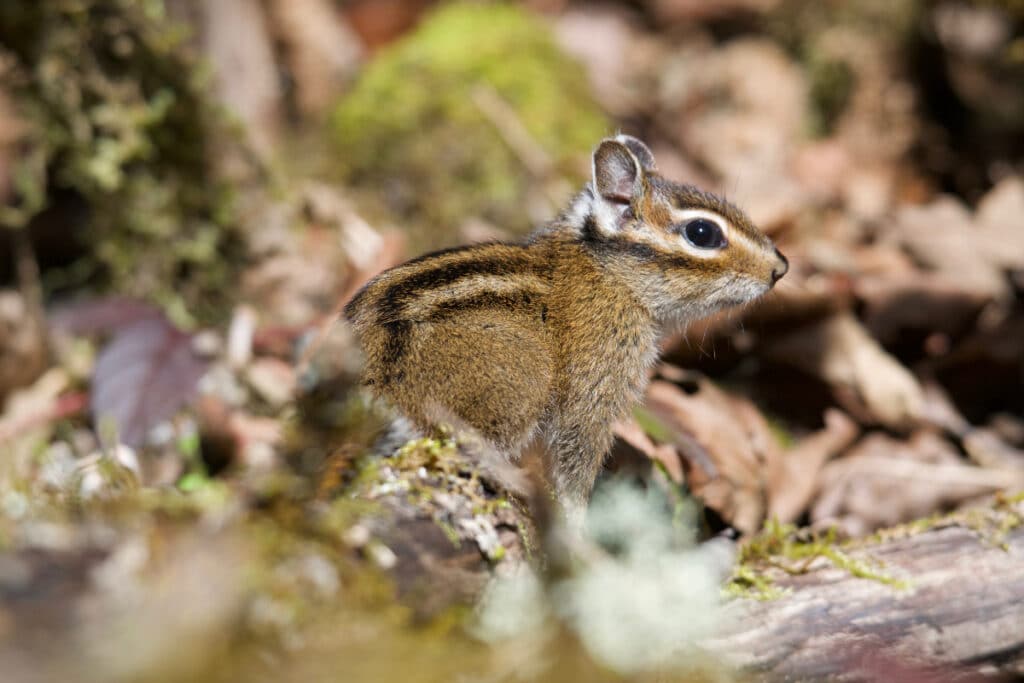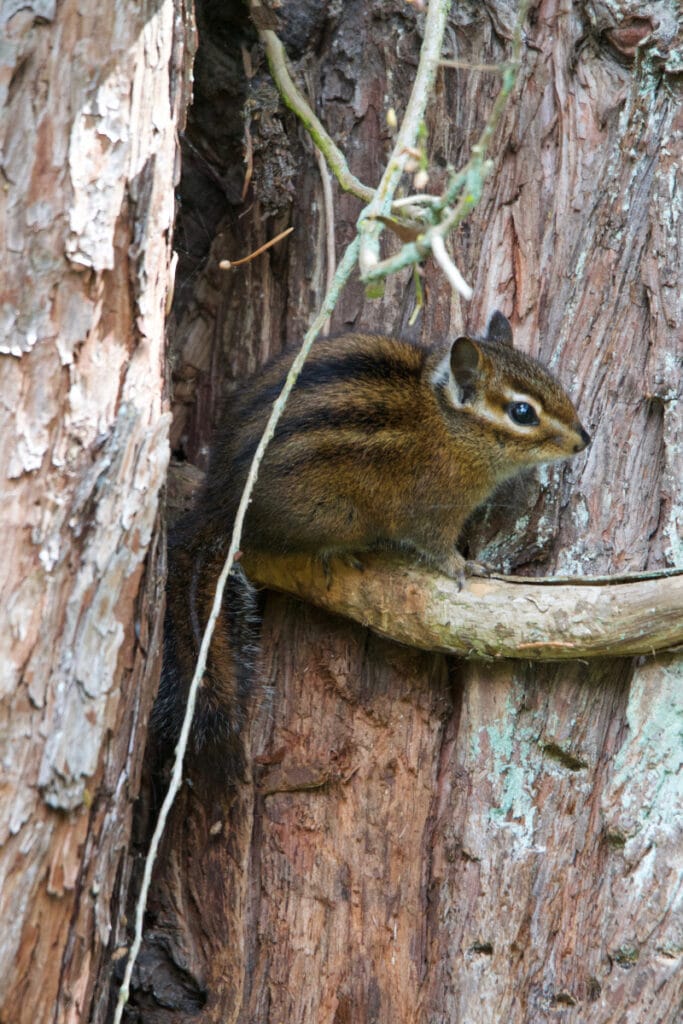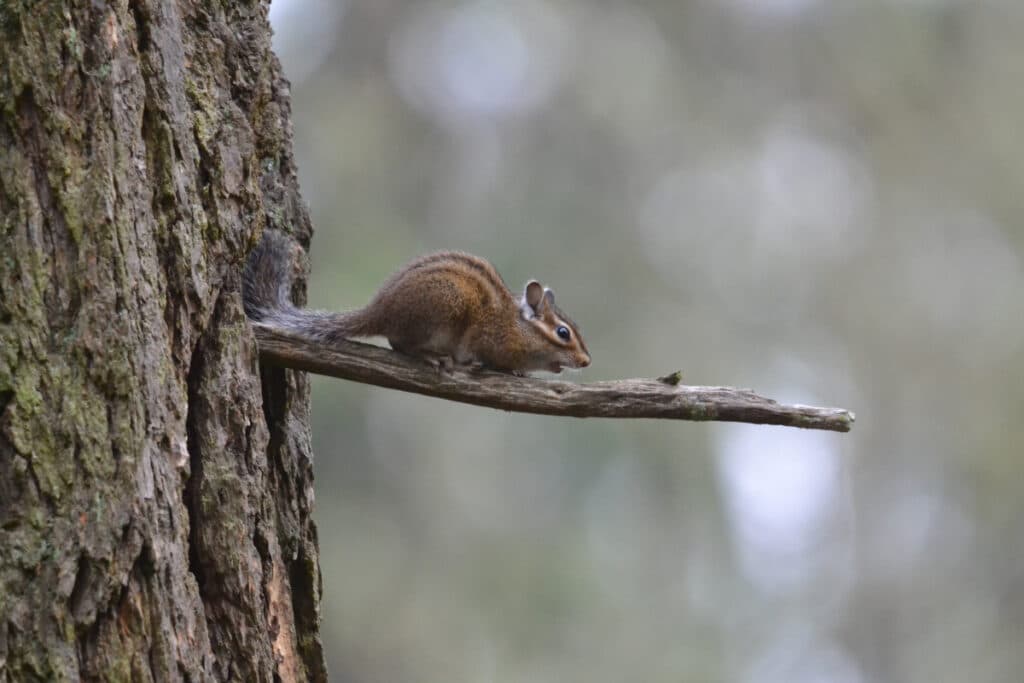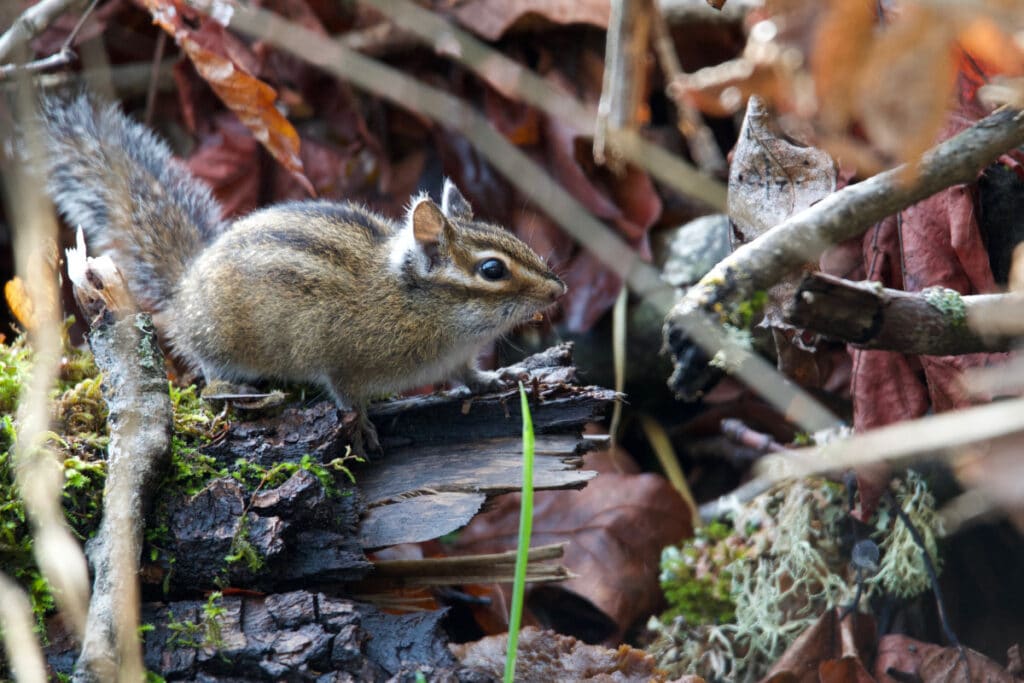Chipmunks are diurnal, which means they are active during the day. You will see this pocket-sized Townsend’s chipmunk quietly scampering over the forest floor as it curiously searches for food.

Its diet consists of seeds, berries, tree and shrub buds, grass, fungi, roots, insects, and bird eggs. It gathers food in internal cheek pouches as it forages. Then, it stores the food in its den or natural cavities.

For safety, it usually stays close to the ground where it can quickly disappear under a log, a canopy of sword fern leaves, a tangle of brush, or its burrow.
It is well-camouflaged to evade predators. Its coat is an array of subtle browns ranging from warm cinnamon to sandy. It also has stripes on its face and back to help it blend into the patterns of shadows.

In addition to being nimble and well-camouflaged, it takes safety measures to conceal the whereabouts of its burrow. First, the entryway is located in thick brush, at the base of a tree or stump, or a crevice in a rock pile. Second, it doesn’t leave a dirt pile at the entrance. The original opening it uses to excavate its home and discard the dirt is sealed when it is finished building. Then, it will open another hole to the burrow that is debris-free.

To communicate danger, it will use a chirping vocalization to sound an alarm. Look for it posted on the lower branch of a tree, the end of a log, or a stump.

In the northern or high-altitude parts of its range, the Townsend’s chipmunk hibernates all winter. Here in the mild climate of the Willamette Valley, it is active all year. To brighten your winter day, keep an eye out for this beautiful, little animal.

Nature is an inexhaustible source of wonder. Hope to see you out there.
See more of Bryan’s work here.
Sources:
Eder, Tamara. Mammals of Washington and Oregon. Canada, Lone Pine, 2002.
Moskowitz, David. Wildlife of the Pacific Northwest: Tracking and Identifying Mammals, Birds, Reptiles, Amphibians, and Invertebrates. Oregon, Timber Press, 2010.

